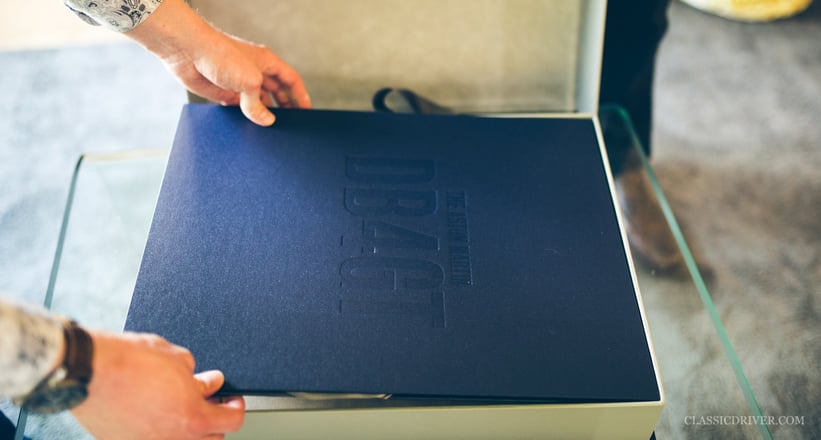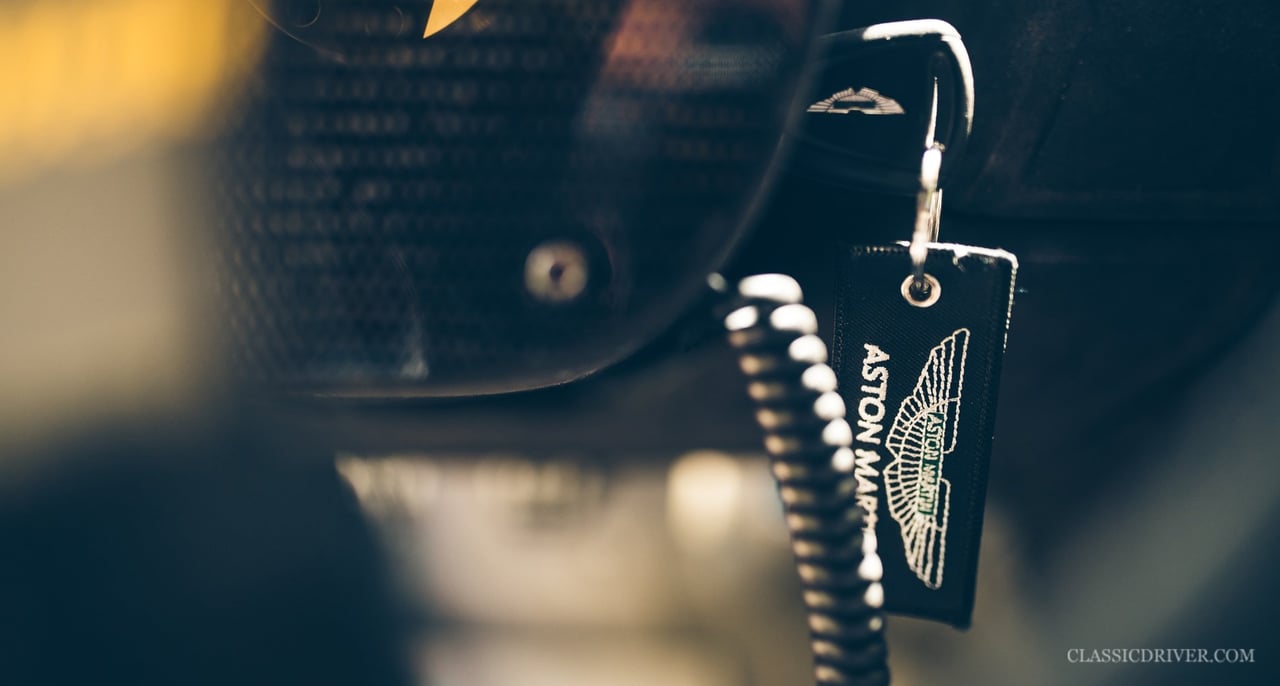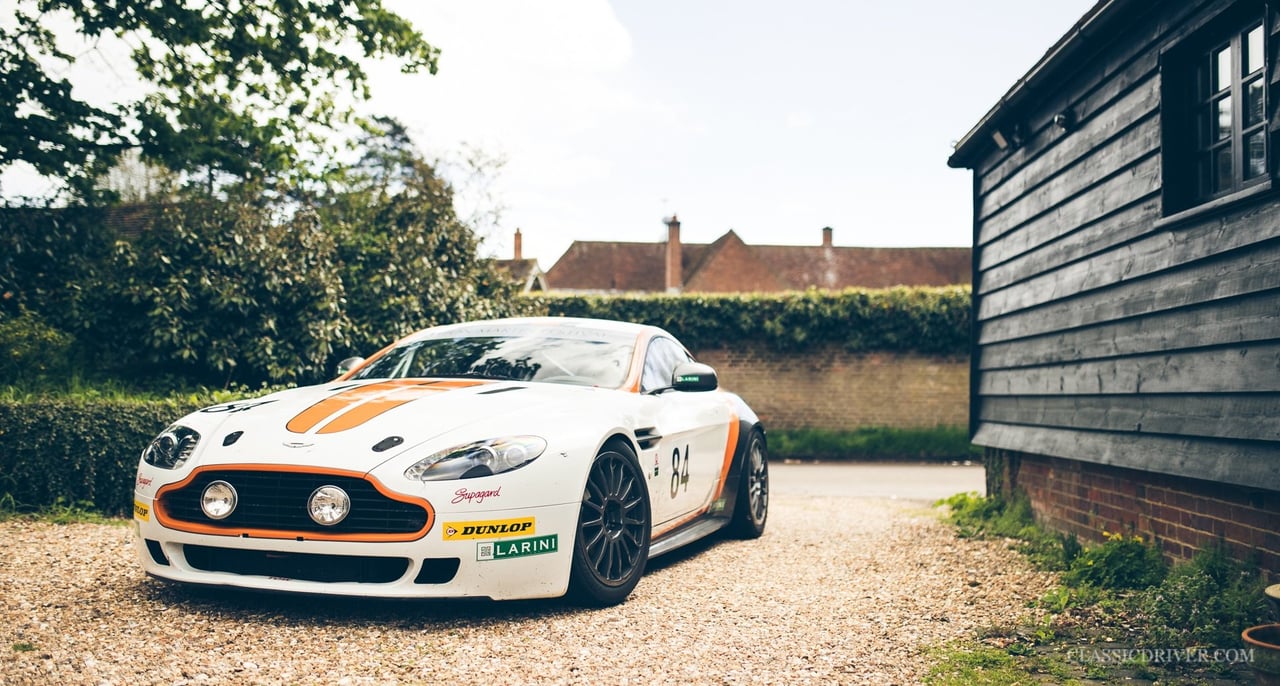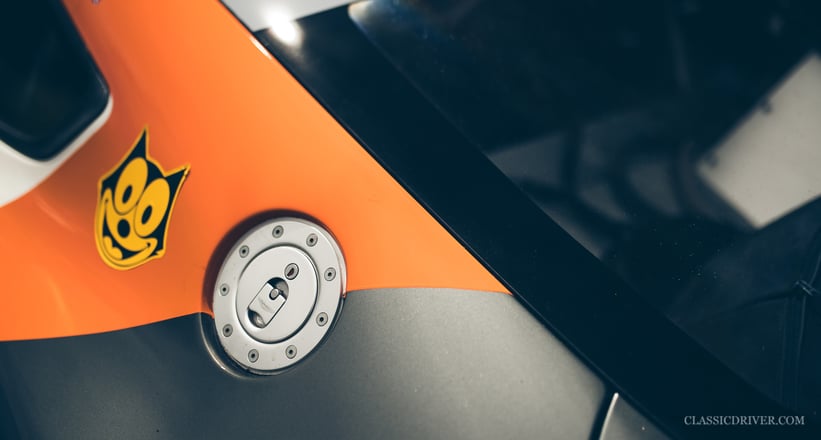


When Stephen Archer tells us he’s spent his entire life surrounded by Aston Martins, he means it. He was brought home from hospital as a baby in his father’s Aston, has owned over 10 examples, has written three definitive books on the subject (Ulster, Aston Martin Zagato, and DB4GT, all published by Palawan Press), and is now spending the majority of his time consulting on significant restorations, researching, and writing. As he succinctly puts it, while we root around his 'den', which is teeming with photographs of Astons he's owned or raced, model cars, and literature, “I just know what an Aston Martin should look like.” Ahead of the Aston Martin Festival, the triennial curtain-raiser to the 24 Hours of Le Mans, we took the V8 Vantage GT4 he’ll be racing with his son Felix at the Circuit de la Sarthe to the local pub for a spot of lunch — the long way, naturally.



From where did this interest in Aston Martin kindle?
When it comes to Aston Martin, I didn’t really have any choice. When I was born, I was taken home from the hospital in a pre-War Aston. My father was a geologist but keen on all things mechanical, and after visiting Brooklands before the War, he became interested in cars. When my brother was born in 1953, he bought his first Aston Martin. He wanted a decent car in which to run around and someone told him to buy a Bugatti, a Hispano-Suiza, or an Aston. Back then, they all cost £100 and he soon settled on an Aston saloon. It then fell apart, so he broke it up and sold the parts to other enthusiasts. He subsequently owned three pre-War Astons and many post-War examples. He was involved in the Aston Martin Owners’ Club from day one and graduated through the ranks to chairman. He remained enthusiastic about Aston Martins for his entire life.



What are your earliest automotive memories?
I remember visiting the factory in Newport Pagnell when I was really young and seeing DB4s being built. On another visit in 1965, I saw a car under a dustsheet and instantly thought it was a DP212. But it was, in fact, a DB6 prototype. My father, brother, and I bought our first DB5 in 1976 for £650. It had a cracked cylinder head and mildew on the steering wheel, but we did it up and actually sold it back to Aston because it had a client for the car. We’ve had about 10 Astons since then — I’ve just always had the cars around me.



Until recently, your day job never concerned Aston Martins – what changed?
Yes, my background is in marketing consultancy and I still have a business in the healthcare sector. But more recently, I’ve become much more involved with Aston Martin and it’s quickly becoming my most important work. I think the writing and the books were a springboard to that — my passion is to get the story of these cars right, and I really love the research and discovering something new. I’m currently in the process of project managing the restoration of 2 VEV’s sister car, which has been wrong for nearly 50 years after a series of accidents.
It’s been 40 years since your very first motor race – how did that come about?
My dad knew Derrick Edwards, who looked after a number of Nick Mason’s cars. He said to him, “Oh, put the Archer boys in one of Nick’s Astons,” and it just sort of snowballed from there. I had my first race in Nick’s pre-War International at Silverstone in 1978 and I’ve probably done 100 races in Aston Martins since.

And of those races, which stand out in your memory?
I raced LM7, one of the 1930s team cars, at Cadwell Park and I was wheel to wheel with an Alfa Romeo 6C 1750 for the entire race. At the Goodwood Revival in 2012, I drove the Ulster that finished 3rd at Le Mans. I knew I’d get a slow start because the car has a very high rear axle. And sure enough, by the first corner, I’d lost eight places. But by the end of the lap, I’d got five of them back, and by the end of the race, I was the first Aston home, finishing 8th after a terrific ding-dong with another Ulster. The three-hour race at Snetterton with a DB3S in the 1990s was great fun, and racing the DP214 recreation I co-built at Le Mans in 2015 was special — that’s a truly great circuit.



That leads us nicely on to your forthcoming race at Le Mans – could you tell us a little bit more about it?
I bought the V8 Vantage GT4 because, firstly, it was great value, and secondly, because it puts a smile on my face, like any Aston Martin should. When you’re racing the old cars, you can’t go too crazy because they belong to someone else and they’re epically valuable. So, while it’s a privilege, the excitement levels are definitely muted somewhat. But with the GT4, I can go hell for leather and it’s a genuinely quick car — we’re going to be hitting 185mph in three places on the Mulsanne. And if it’s wet, we’ll do very well because the other cars — GT4s, DBRS9s, DBR9s, and Vulcans — will have less of an advantage. To drive a racing Aston Martin at Le Mans with my son Felix will be incredible. I started racing with him when he was 19 and he’s very good.

One of your biggest responsibilities today is restoration project management – what’s your philosophy on restorations?
The future is authenticity and preservation — where you can preserve, preserve. If the leather’s old but not split, for example, never throw it away. And you should only replace things that need replacing. Even if parts are removed, they should be kept, as they’re part of the cars’ stories. Today, there’s an obsessive attention to detail — I’m not criticising the way they were done, but 20-year-old restorations are going to be wrong because the thinking was entirely different. You need to go the extra length now because the cars are worth it, as is the pleasure for the owners.
What’s the appeal of an Aston Martin in comparison to, say, a Ferrari – why does the brand have such a devoted following?
It’s definitely a combination of factors. Firstly, the vast majority are handsome and beautiful and that’s very important — I certainly couldn’t drive a car that’s not good-looking. Secondly, you can genuinely feel the build quality when you drive one. Thirdly, the brand has an inherent link to motorsport. And finally, there’s the rich smell of the Connolly leather — it’s an absolutely vital part of the experience and something the Italians just can’t replicate. Funnily enough, I have a Dino in the garage that was restored by Aston Martin specialists in the 1980s and it’s got Connolly hide in it. The James Bond association is fun, but for me, it’s not a core part of the appeal as it is for some people. I actually went in the Bond DB5 in 1965 — it was taken to Silverstone during a race meeting and my dad knew the chap at Aston and asked if he’d take my brother and me around the track!



What’s the single best Aston Martin you’ve ever driven?
It really depends what for! For both the road and track, the Ulster is stunning — on a country road, you’d never be able to keep up with one. I’ve driven the only DP214 on the road and that car is electrifying and spectacularly advanced. The DBR1 is the purest racing car and, of all the Astons I’ve driven, it’s the only one you truly wear as an extension of yourself. I’ve driven lots of other cars, such as Ferraris, Porsches, and even a Lamborghini, so I have benchmarks with which to compare — it’s not like I’ve been living in a cave full of Astons my whole life. There’s a point at which rationality ceases to exist, though, and these cars really are in my blood.

When you were growing up, Aston Martins were largely a hobby – how does it make you feel to see that these cars are now so valuable?
There’s one good thing and one bad thing about it. The good news is that it’s now worth it and justifiable to put the cars right and maintain them to perfection. The amount of DB5s being pulled out of barns and saved is extraordinary. But the bad news is that many of the genuine enthusiasts who kept these cars going in the 1950s, ’60s, and ’70s can no longer afford to buy or maintain them. The hobby used to be more important than the ownership, whereas now it’s often the other way around, which is a shame. I know a number of people, for example, who’ve bought DB5s and painted them silver, like the Bond car. There’s a market for silver DB5s and it’s all about image — that’s not really what I’m about.
If you could own any Aston Martin, regardless of budget, which would you choose?
I couldn’t choose just one. I have quite a small garage, so I’d have a DB4GT Zagato, an Ulster, and possibly a new Vanquish S.
Photos: Tom Shaxson for Classic Driver © 2018






























































